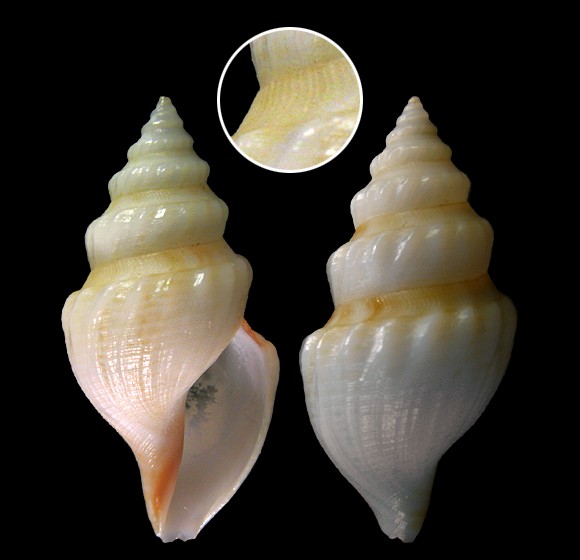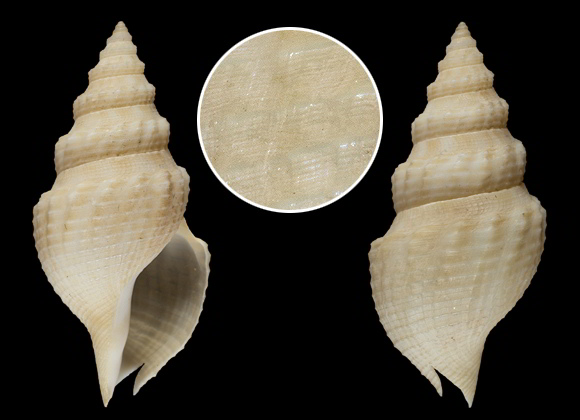
300m deep, in the Strait of Gibraltar. 19,8mm.
Original pictures provided by M.T. Spanu (IT).
– (CC BY-NC-SA) –

« Shell of medium size, ovoid curve, slightly elongated, a little more developed above than below. Spire mediocre, obtuse, composed of 8 to 9 whorls […], with a slightly concave-oblique profile on nearly half of the height […], then almost straight or slightly convex, with a hull sensitive to the change of direction of the whorls; last whorl a little smaller than two-thirds of the total height, […] terminated by a canal open, wide, short and almost straight. Suture thin, well accused. Apex small, mamillated, followed by 3 to 4 embryonic whorls well rounded and very finely decussate. Aperture equal to half of the total height, subrectangular-oblique, a little narrower at the bottom than at the top, inscribed in an almost vertical plane. Peristome with subcontinuous edges; outer edge weakly projected forward, thin and sharp, furnished in the upper part of a noticeable but poorly marked pleurotomoid notch […] ; columellar margin a little arched at the top, right up to the base where it ends in a point, accompanied at the upper part of an accused callum, little developed. »

Original pictures provided by M. Caballer for the MNHN.
– (CC BY) –
Locard: « Test solid, rather thick, subopaque, decorated with longitudinal ribs, decurrent cords and growth streaks. Longitudinal ribs […] slightly oblique, very short on the last whorl, where they merge with growth streaks; decurrent cords a little thin, regular, spaced, continuous, very attenuated at the top of the whorls, scarcely more marked at the base of the last one, along the canal; growth striae strong, irregular, very wavy, forming in the concave region of the whorls some small wavy folds very close together, merging, at the last whorl, with the prolongation of the carenal nodules. Color of a very light yellowish red, not shiny, whiter inside. » – op. cit. p.246-248.